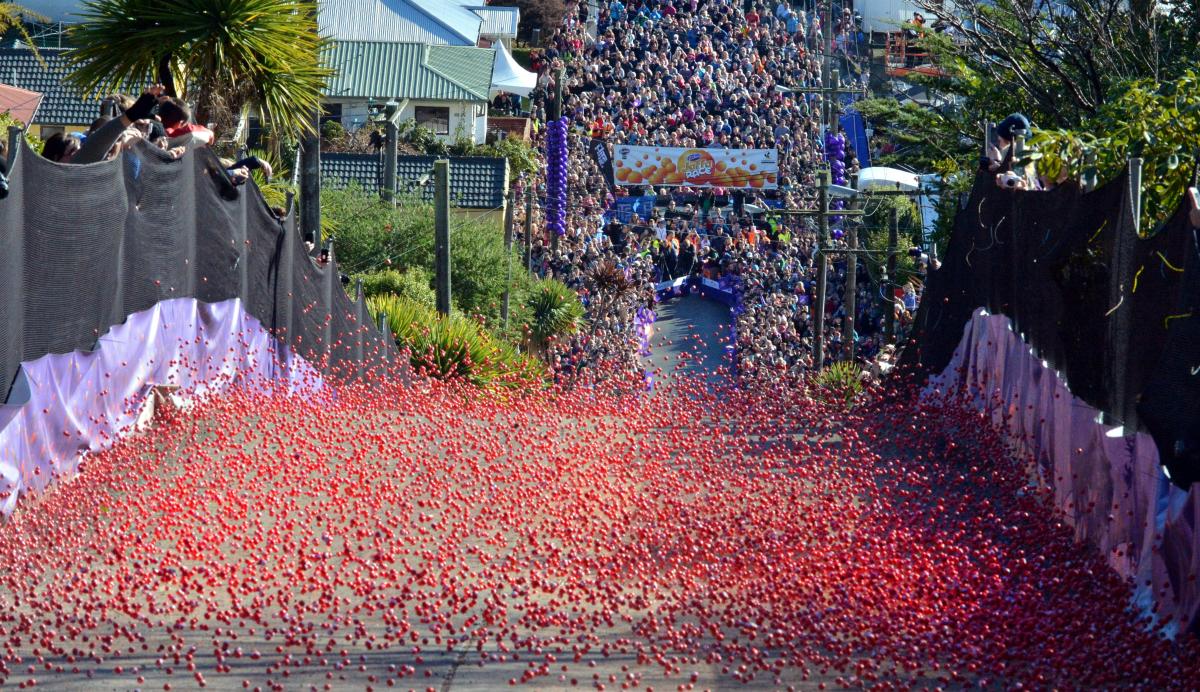Innate Furniture owners Guido Loeffler and Nick Lee insist on working with sustainably harvested native timbers and domestic steel sheets for their modern and minimalist furniture designs.
They want to take this a step further.
After experimenting with their own recipes from natural oils and waxes, they are going to experts to help them produce a commercial-grade coating.
The finishing oils must be made from plant-based materials locally grown sustainably without detriment to the environment.
Mr Loeffler said they were working towards a commitment to produce 100% New Zealand-made furniture.
Eventually, every part of a table or other furniture – down to felt caps for their feet – would be locally sourced, he said.
‘‘As far as the oils are concerned we are talking with AgResearch and local universities around the development of natural oil finish product that uses 100% New Zealand raw ingredients including hemp seed oil, bee wax as well as lanolin finishes for our steel and then natural pigments.’’
The plan was to sell the finished product to other users.
By using local products, they knew they were ethically-sourced, supported local communities, and were transported with low carbon emissions, he said.
‘‘Put it like this, we grow a lot of trees here, cut them down and put them on a boat overseas where someone builds a table and it comes back to New Zealand and we buy it,’’ Mr Lee said.
‘‘The New Zealand economy doesn’t get the kicker in this and that seems like a silly process when we can do it here.’’
Innate Furniture was born from lockdowns after Covid-19 swept the world.
Mr Lee was making furniture from recycled timber in the backyard of his flat as an amateur woodworker in between a 16-year music career as a solo artist, then playing 1980s covers with bands before moving into country music.
African-born Mr Loeffler had just arrived back from a charity project raising money for a school in Tanzania and had previously worked for a company manufacturing and supplying sustainable building materials.
When the pandemic arrived the two flatmates began ‘‘connecting the dots’’.
Mr Lee said they started selling furniture firstly on the NZ-made Facebook Market page.
‘‘After Covid hit the import stuff started drying up and there was a bit of this talk we needed our own economy and the world’s about to go into this sort-of zombie-apocalyptic world. People got quite excited by this New Zealand-made dynamic and liked our designs from beautiful pieces of timber and we got heaps of orders.’’
Step one was to get a workshop and within weeks they had outgrown their small leased premises.
To keep up with backed-up orders for tables and other furniture they had to work 18-hour days.
Today, they have a fully fitted-out workshop and contract out work for their own modern designs combining different native species with often steel milled at Glenbrook by New Zealand Steel.
‘‘They take the iron sand from the beach, extract the iron, put the sand back on the beach, plant flaxes and natives and then they melt it down to make it into sheets,’’ Mr Lee said.
‘‘We get the sheets cut down to strips and get our table legs from that. It’s got a really cool land and sea story.’’
He said they were working to connect with New Zealand screw manufacturers for a custom run of steel fixings.
With only a few exceptions such as Italian porcelain for outdoor tables, the main focus is on using locally sourced materials.
After persevering, they now have a secure supply of sustainable native timbers from recyclers, saw millers, trusts and forestry associations around the country.
Rimu is salvaged from buildings damaged by the Christchurch quakes, while other native species come from continuous covered forestry.
Mr Loeffler said they liked to work with native timbers harvested under a sustainable forest managed permit with each tree tagged and receiving a GPS co-ordinate.
Only a small percentage of mature trees over a large area was removed from native blocks, he said.
‘‘It’s calculated in such a way that the forest canopy is never compromised. Often, it’s even helicoptered out so it doesn’t get dragged through forest and damage it. It’s done in small clusters of three or four trees to create a small opening so sunlight can hit the forest floor for seedlings to return strongly.’’
Among their favourite permit-harvested species are regenerated totara growing thickly on marginal farmland in Northland because of its beautiful grain, paler colours for the Scandinavian look and history as the main timber for Maori carving.
West Coast-sourced red and silver beech are another of their preferred species.
This was found abundantly in large stands, unlike rimu which was why they focused on recycled supplies, Mr Loeffler said.
Their furniture range is sold to homeowners through their online store and designers, while they also make hospitality furniture.
Nothing goes to waste as off-cuts are made into chopping blocks.














